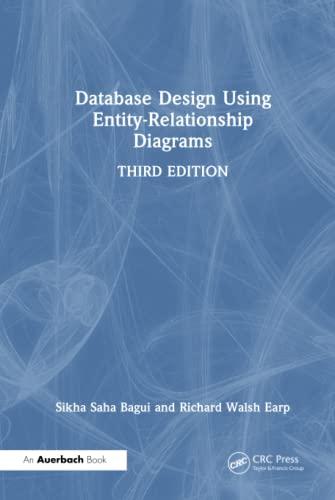Question
2. Consider a Bayesian classification problem where we wish to determine if a contact on a social network is a friend, relative, or co-worker. We
2. Consider a Bayesian classification problem where we wish to determine if a contact on a social network is a friend, relative, or co-worker. We use four features - x1 (MessageFrequency), x2 (MainMessageType), x3 (Proximity), x4 Age. Each feature takes on one of up to five values, shown below:
| MessageFrequency | Annually | Monthly | Daily | |
| MainMessageType | StatusUpdate | DirectMessage | ||
| Proximity | SameCity | SameCountry | SameState | |
| Age | Child | SeniorCitizen | MiddleAge | Teen |
We classify each user as one of three classes: yi=Friend, yi=Relative, yi=Co-worker. Based on a large training set, we wish to estimate all joint probability likelihoods, e.g.,
P(x1=Monthly, x2=StatusUpdate, x3=SameBuilding, x4=Teen | y=Co-Worker),
P(x1=Daily, x2=StatusUpdate, x3=SameState, x4=SeniorCitizen| y=Co-Worker).
as well as the class priors
a) Assuming the features are independent, how many total parameters need to be estimated, accounting for classifying friends, relatives, and co-workers?
b) Assuming the features are not independent, how many total parameters need to be estimated, accounting for classifying friends, relatives, and co-workers?
Now assume we replace the final discrete feature values with numbers:
| Age | 0(Child) | 1(Teen) | 2(MiddleAge) | 3(SeniorCitizen) |
We use a Gaussian likelihood for the probability of this feature for each class y: P(xAge | y).
c) Assuming all features are independent, how many parameters need to be learned to compute the posterior probability P(y | xage, xproxim, xmsgType, xmsgFreq)
Step by Step Solution
There are 3 Steps involved in it
Step: 1

Get Instant Access to Expert-Tailored Solutions
See step-by-step solutions with expert insights and AI powered tools for academic success
Step: 2

Step: 3

Ace Your Homework with AI
Get the answers you need in no time with our AI-driven, step-by-step assistance
Get Started


